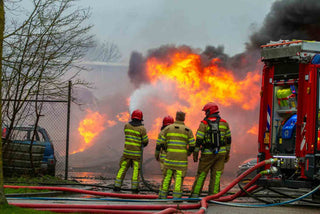Having a comprehensive home emergency plan is essential for your family’s safety and well-being. While many of us prepare for natural disasters like hurricanes, earthquakes, and floods, it’s crucial to consider other potential emergencies that can disrupt our lives.
This practical guide will help you develop a robust home emergency plan to tackle various unexpected events, including natural disasters, civil unrest, and infrastructure failures.

The Importance of a Home Emergency Plan
A home emergency plan is a detailed strategy designed to prepare your household for sudden and potentially dangerous situations. It encompasses everything from evacuation routes to emergency contacts, ensuring that everyone knows what to do and where to go in crisis. By having a solid plan in place, you can reduce panic, make informed decisions, and protect your loved ones during emergencies.
Identifying Potential Risks
Begin by identifying the types of emergencies that are most likely to affect your area. While natural disasters are often at the forefront of our minds, consider other scenarios such as civil unrest, extended power outages, and infrastructure failures. Political protests, for example, can sometimes escalate, leading to unsafe conditions. Attacks on the power grid or severe weather can cause prolonged blackouts. Accidents like a bridge collapse or a gas leak can pose immediate dangers with unique challenges of their own. Understanding these risks will help you tailor your home emergency plan to address a wide range of situations.

Developing an Evacuation Plan
Create a clear and concise evacuation plan for your household. This should include designated meeting points both inside and outside your neighborhood, where family members can reunite if separated. Identify multiple routes to these meeting points, considering the possibility of road closures or other obstacles. Plan how you will transport your family, including pets, in an emergency. Ensure your vehicles always have at least half a tank of fuel and are in good working condition. You should also keep a backpack survival kit in your vehicle so you’re ready to go at a moment’s notice.
Assembling an Emergency Kit
An essential component of emergency preparedness at home is having a well-stocked emergency kit. Your kit should include basic supplies like water, non-perishable food, a first-aid kit, flashlights, batteries, and a battery-powered survival radio. Personal items such as prescription medications, important documents such as birth certificates, insurance policies, school records, and cash should also be included. Keep these items together in a folder so you know exactly where they are, and you only have to grab one item on your way out instead of multiple documents.
Additionally, consider the special needs of infants, elderly family members, or those with disabilities. Store your emergency kit in an easily accessible location and ensure all family members know where it is.
Establishing Communication Protocols
During an emergency, communication is key. Develop a plan for staying in touch with family members and emergency services. Maintain a list of important phone numbers, including family members, neighbors, and local emergency services. Ensure you have multiple ways to communicate, such as cell phones, walkie-talkies, and a landline phone. Keep a list of reliable news sources to stay informed about the situation.
Practicing Regular Drills
Regularly practicing your home emergency plan is crucial for ensuring everyone knows what to do. Conduct drills for different scenarios, such as evacuations or sheltering in place, and involve all family members. This practice will help identify any weaknesses in your plan and allow you to make necessary adjustments.
Conclusion
Being prepared for the unexpected is a vital part of protecting your family and home. By developing a comprehensive home emergency plan that considers a variety of potential disasters, you can ensure that you are ready to act quickly and efficiently when it matters most. Remember, emergency preparedness at home is not just about having supplies - it’s about having a plan and practicing it regularly.

